Essential research for visiting Kyushu - complete list of best Kyushu travel spots
This guide contains important information if you plan to drive in Japan.
Read on for must-know rules of the road plus essential info, tips and advice for drivers in Japan. See the road signs you’ll encounter and learn about the speed limits in Japan. Understand the hazards of driving in Japan.
Add your questions or share any tips in the comments section below.

Is it hard to drive in Japan?
There is nothing difficult about driving here. We’ll look later in more detail at Japan driving laws but they aren’t weird.
Can I drive in Japan if I don’t speak Japanese?
My Japanese is horrible and I do okay. An English-language satellite navigation system or Google Maps will help with directions. Later in the article you’ll see the most important Japanese road signs. Unfortunately a couple are written in Japanese. You’ll just have to memorise those. We have arranged 100+ self-drive itineraries for our clients even though none of them speak Japanese.
Is it safe to drive in Japan
Accidents are rare. The roads are generally good and most drivers are safe and sensible. Due to the strict drink-driving laws in Japan you are very unlikely to meet a drunk driver. In fact based on number of fatalities per 100,000 vehicles you’ll be enjoying your road trip in one of the top-10 safest countries in the world.
What’s the driving age in Japan?
The legal driving age is 18 in Japan.
What side of the road does Japan drive on?
The good news (for Brits like me at least) is that the driving side in Japan is on the left. If you are over here from the States or Europe you will be driving on the ‘wrong’ side. This usually isn’t a problem in busy traffic. The hard part is remembering it when you turn into an empty road. All rental cars in Japan are right-hand drive.
Can I drive in Japan with US, UK, Singapore (etc etc) licence?
Yes you can. You will need to bring an international driving licence, also called IDP (International Driving Permit). You can get these easily and cheaply in your home country. IDPs are valid for one year. You will need to bring your home country licence too.
Can I drive in Japan with an Indonesian licence?
You cannot drive in Japan with an Indonesian driving licence even if you have an international driving licence or IDP (International Driving Permit). We have clients from many countries and unfortunately it is only our Indonesian clients who cannot drive in Japan. Ma’af sekali ya.
Japanese driving rules
The rules of the road in Japan are probably similar to your country. I don’t need to repeat them all here. You are required by law to wear a seatbelt (so are your passengers). You allowed to use a phone only if it’s hands-free. That being said I see loads of people using a phone while driving. Shockingly you see drivers watching TV too! You must always carry your licence when you are driving. You need to carry a red triangular thingy if you drive on an expressway. You are required to use a child safety seat for any child under the age of six. Keep to the left and overtake on the right. Don’t drink and drive.
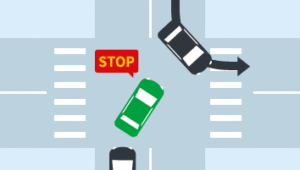
Anything scary about driving in Japan?
For me at least, one thing. It’s how traffic lights handle cars and pedestrians. In the UK (where I learnt to drive) when the traffic lights are green for cars they will be red for pedestrians. Here traffic lights are often green for both cars and pedestrians. If your traffic light is green and you are turning left or right, pedestrians may also have a green light. This allows them to cross the road that you are turning into. It’s very important to note that here in Japan pedestrians always have right of way. You may have this system in your country but I’ve never seen it before. Luckily I haven’t wiped anybody out yet. I’ve come scarily close a couple of times. Any time you are turning keep a careful eye out for people crossing the road. They will expect you to stop. They have right of way. Be especially careful of cyclists zooming across.
What are the road signs in Japan?
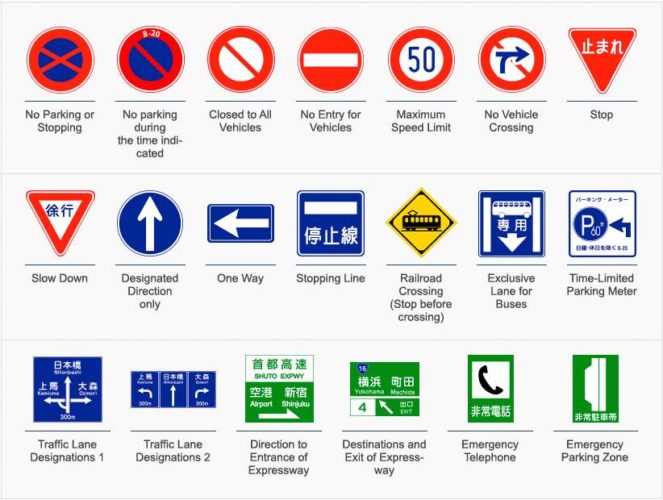
Cyclists vs Cars in Japan
A good thing for drivers is that cyclists usually ride on the pavement in Japan. This keeps them out of your way. However you need to take care any time you turn off the road and and cross the pavement (you may call it ‘sidewalk’). For example if you are going into a car park, gas station or convenience store. Make sure a cyclist isn’t speeding along the pavement as you cross. Want to know a scary thing? If your car hits a cyclist it’s assumed to be your fault. You have been warned.
What are the speed limits in Japan?
If there’s a speed limit sign then (obviously) that’s the limit. If there’s no speed limit sign you can go up to 60 km/h on ordinary roads. If there’s no speed limit sign you can go up to 100 km/h on an ‘expressway’ (you might call it ‘motorway’ or ‘highway’). You can’t go lower than the minimum speed. Minimum speed sign has the speed written with a line under it. You usually only see minimum speed signs on expressways.
This sounds great but the problem is that there are speed limit signs everywhere. Around town you are usually stuck at 40 km/h and in side streets just 30 km/h. Personally I find that to be painfully slow. However I guess it’s one of the reasons Japan is such a safe driving country. Most other drivers obviously find it irritatingly slow too. When I stick to the speed limits (which I always do, not wanting to get busted) everyone overtakes or stacks up behind me. The Japanese police do bust people for speeding but there is said to be a 10% tolerance. You don’t need to be too paranoid about going a couple of kilometres per hour over the limit.
What are the drink driving limits in Japan?
Effectively there are none. Drinking and driving in Japan is completely, absolutely 100% forbidden. Don’t think you can have one or two drinks and get away with it. The police here are extremely strict about this issue. There are massive fines (and a big load of hassle) if you get caught. You are also risking up to 5 years in prison. The passengers in your car can be prosecuted. The barman that served you can be prosecuted. Officially the limit is BrAC 0.15 mg/L (equivalent to 0.03%) but the police can fine you just for the smell of alcohol on your breath. Go over the limit and you’re really screwed. Just get with it. There is no drinking and driving in Japan. When we arrange saké brewery tours for our clients the staff at the brewery won’t allow drivers even one little tasting sip.
Are Japanese polite drivers?
Of course they are. It’s a pretty polite society all round. To thank a driver make a bow (just a small one like a nod of the head). To thank a driver behind flash your hazard-lights. The Japanese driver will almost always let somebody join the queue in front of them. If you stop in a queue leave space in front so a driver can join from the side. Let’s be nice and polite like the Japanese.
What does flashing headlights mean in Japan?
A quick flash of the headlights means ‘go ahead’ or ‘you first’. I lived in Indonesia where a flash of the headlights means ‘get the hell out my way’. Don’t get confused like I still do.
Train crossings in Japan
You will notice a lot of level-crossings at train tracks. I don’t even need to mention that if you see red lights wildly flashing and warning bells jingling it means you can’t cross. Do be aware however that even when there are no trains coming and the barriers are up you are required by law stop. You need to come to a complete stop and visually check for trains before proceeding. The Japanese police are a bit anal about this. You can sometimes see them hanging around at level-crossings trying to catch people out. You have been warned.
Are there toll roads in Japan?
Yes and they’re too expensive (in my opinion). They will get you there fast because almost all toll roads are expressways. Take a look in the road signs section above. The green signs indicate you are moving onto an expressway. Remember you can go up to 100km/h on an expressway. Most drivers go faster. If you are time-rich you can set your SatNav (or Google Maps) to avoid them. This will send you onto the prettier but slower routes rather than the faster but blander expressways.
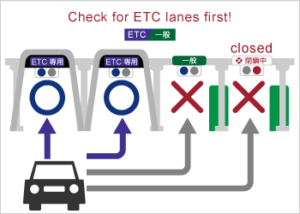
ETC (Electronic Toll Collection)
On most toll roads there will be two kinds of booth to drive through. One will be marked ‘ETC’ for people with an electronic card in their car. Many rental cars will have ETC card included. Another booth will be for people paying cash. If you don’t have an electronic card avoid the purple booth marked as ‘ETC’.
Traffic lights
It’s not just red for Stop or and green for Go. It’s common to see a traffic light that is red but with a green arrow to the left and the green arrow to the right. This means that only cars going straight ahead need to stop. Now I put this down on paper, it seems pretty obvious. However it’s caught me out many times. I realise my mistake from a gentle beep from the car behind. By the way, if you ever in discussion with a Japanese person (hopefully it won’t be a cop) about traffic lights don’t be surprised at the colours. In Japanese traffic lights are red (aka), yellow (kiro) and blue (ao)!
Navigating in Japan
You’ll need a rental car with English-language sat nav (most only have Japanese). If you use our customised trip planning service (Kyushu island only), we’ll arrange a rental car for you with English-language satellite navigation system (GPS).
How to input into your GPS (sat nav) in Japan
Even with an English-language GPS navigation system, it’s almost impossible for drivers who don’t read and write Japanese to input addresses. To avoid this problem we include a 10-digit number for all destinations on our clients’ itineraries – sightseeing spots, restaurants, hotels etc.
Another option is to enter the phone number of your destination into your car navigation system. You’ll need to know the landline number of your destination (not a mobile or cell phone number). Unfortunately this method is very hit-and-miss in Japan. Sometimes the phone numbers are recognized and sometimes they aren’t.
Renting a car in Japan
Renting a car can be a good alternative to travelling by train. We help arrange a rental car for lots of our guests. There are a lot of advantages of renting a car. You can see a lot of places in a limited time. You have more freedom. You aren’t restricted to timetables. Less planning is required for a journey. Kyushu may be a better place to rent a car than other parts of Japan. The travel distances are shorter. The roads are less crazy. The traffic jams are less. Also it’s a more rural island. This means train coverage can be less extensive. There are though disadvantages of renting a car for your holiday. Some people might find self-driving less relaxing than travelling by train. Navigating may be a headache. Parking fees and the costs of tolls can soon add up. If you request Kyushu Journeys to plan your itinerary we will advise whether rental car or train is most suitable.
Kyushu Road Trip
If you’re curious, take a look at these Kyushu road trips. You’ll get a good idea of the kind of things you can see and do here on Japan’s most amazing island:
Takeo Onsen & Ureshino Green tea and natural hot-spring onsen off the beaten path
Arita & Karatsu Meeting the incredible craftsmen of two of the most popular Kyushu pottery villages
Oita & Kumamoto Bubbling Hells, a quaint fishing port, and one of Kyushu’s most colourful shrines.
Renting a motorbike in Japan
You can rent a motorbike up to 50 cc engine size (let’s call it a scooter) with a normal driving licence and IDP from your home country. Anything bigger and you are required to have a motorcycle licence. A scooter is a nice idea if you plan to stay mostly in rural areas. It’s cost-effective too because scooter rental is much cheaper than cars. Hint: if you rent a scooter it’s usually cheaper to buy a helmet than pay daily helmet rental fee. Another hint: Better avoid the rainy season (June-July). If you are an experienced biker with a motorcycle licence we can help you rent a really cool big bike. Contact us for details.
Car parking in Japan

Parking in Japan can be a problem. In fact you need to prove you have somewhere to park before you can buy a car here. In the cities you can’t just park anywhere. You need to find a paid parking space (it’s not such a problem in rural areas). This means parking in Japanese cities can be expensive. You can pay ¥100 for 20-30 minutes although there are cheaper places if you hunt around. For parking overnight there is usually a fixed maximum rate (not per hour) around ¥800-¥1000. Coin parking meters are common on city streets. You pay on arrival. Note many have a fixed maximum time (often one hour). This means you will have to move your car to another meter if you want to stay longer. Parking at meters is free in the evening but you aren’t allowed to stay overnight – your car may be towed away. Small self-service car parks are also common in cities. You park you car and a bar will rise under your car to stop you driving away without paying. For this reason make sure you park carefully in the parking space. You pay when you return. Note the number of your parking spot before going to the payment machine. The instructions will probably be in Japanese so you might have to ask another driver how it works. Don’t worry, Japanese people are usually super-helpful. You will also find many underground or multi-storey car parks in Japanese cities. These are easy to use even if you don’t read Japanese. You collect a ticket from the machine at the entrance barrier. When you leave insert your ticket in the machine at the exit barrier and pay the amount shown. Many shops or restaurants in malls or departments stores will give you a parking coupon (“chusha-ken”) if you shop / eat there. You insert this coupon before your cash at the exit barrier. Most supermarket parking is free – they make their money from the horribly expensive prices they charge instead.
Hazards of driving in Japan
Watch out for these dangers if you drive in Japan
Pedestrians or cyclists crossing the road when you are turning right or left
Even though your traffic light is green so is theirs
Pedestrians in the road
Watch out on the many narrow streets with no pavements (you may call them ‘sidewalks’)
Drunk pedestrians and cyclists
Be alert especially on Friday and Saturday nights
It seems unfair because us drivers need to be cold stone sober, but that’s how it is
Cyclists without lights
Almost all of them
Tailgating (don’t do it)
After a recent high-profile fatal accident police are going hard on this
Drivers ‘undertaking’ (overtaking on the left)
It’s not allowed but it’s very common
Don’t get busted for speeding
Japan has traffic police and speed cameras just like your country
Don’t get busted (like I did) for not stopping at a junction
Check the ‘Stop’ sign in the road sign section above
Remember it, because it’s written in Japanese
I got a polite cop, 2 points and ¥7000 fine
Don’t drink or drive, at all, ever
The police look out for this more than anything
Hopefully the takeaway point you got from this article is that driving in Japan isn’t too problematical. Most automobile drivers obey the rules, the roads are pretty safe, and you are unlikely to encounter a drunken driver causing havoc. I’ve read online some people complaining about the standard of Japanese drivers. Personally speaking I don’t see a problem. This may be because I spent 15 years diving in Indonesia and anything is better than that.
Happy driving …
We hope you found this Japan driving guide useful. If we missed anything add your question below. If we got something wrong, correct us. If you have any tips, share them.
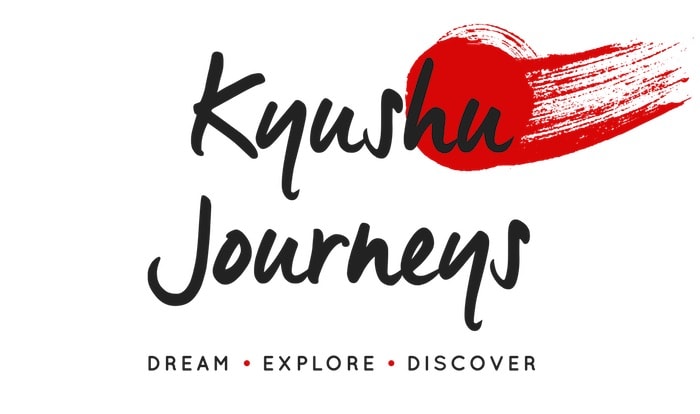
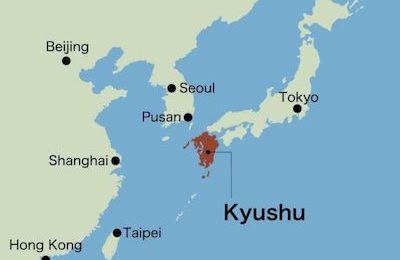
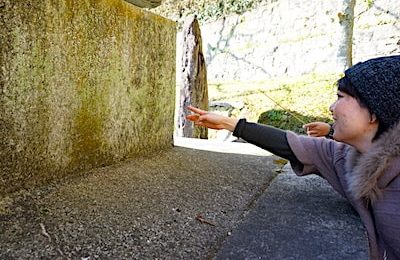

i do love your post plenty. Tell me, how are petrol stations stationed on Japanese roads.. like usually how far apart. Cheers
Thanks so much! Not too sure but hopefully someone else reading these comments will know 🙂
Hello, we drove from Tokyo to Hiroshima and back, via Nikko and Nagano. On both motorways, smaller roads and towns there are plenty of petrol stations, more than suitable for both cars and motorcycles.
Hello,
We are doing a road trip in Japan in March, a loop from Tokyo via Matsumoto and Kyoto over 25 days. The only worry I have is the road between Matsumoto and Takayama mid march. Do we have to ask for chains or winter tires from the car hire company?
Thank you for your advice
Laurence
Sounds like a great trip you have planned Laurence, unfortunately we only run programs around the island of Kyushu so don’t have any information about the areas you mentioned. Hopefully somebody else reading these comments can provide more information. Have a great trip! The Kyushu Journeys Team
We have just returned from an 8-day trip driving around Kyushu and although my daughter did all the driving, it was fairly straight forward. We collected the car in Fukuoka and went roughly clockwise around the island, including the ferry trip to Sakurajima Is. where we were lucky to see the volcano give a huge burst of ash. The only 2 problems we encountered were getting from Kagoshima to Kumamoto when we ended up driving in a circle for an hour due to imprecise directions when coming off a toll free freeway – but we did see some lovely villages! On the last day, leaving Kumamoto it took over an hour to get onto the toll road to go north as we were directed to an entry ramp which was ETC only. We ended up going by instinct and reading signs.
Over all, a great way to see Kyushu
I reside in the US. Wanting to see the more remote parts of Kyoto we are looking to rent a car as well as a day trip to Mt. Fuji from Kyoto. Do you advise this for a first time international driver?
TIA
We are big fans of road trips here Danielle but because we are 100% based on Kyushu island we cannot answer about Kyoto. However we often have clients from the US who do rental car trips without any issues. Enjoy!
What is the fine for driving wreckless, and having an accident if you fall asleep at the wheel in Japan
The laws in Japan are very strict and have recently been reinforced regarding any wreckless driving and can lead up to 5 years of imprisonment and a fine of up to 1 million Yen. Even driving while looking at your phone is fined at 300,000 Yen and/or a prison sentence.
Hope this helps!
Kind regards
I wish to self – drive around the Japanese Alps, sort of basing myself at Matsumoto to take in such sights as Takayama (Shirakawa-go and Gokayama), Kanazawa (Kenrokuen Garden, Higashi Chayagai tea house and geisha area)
I prefer to hire a car, but my wife is not that happy to do so! She is very nervous about driving in big cities (she will not drive) even though Japan drives on the same side of the road as we do in Australia! Please tell her it is safe to do so! I drove her around much of Hokkaido, but Hokkaido was emptier than Western Australia!
I realise you are a Kyushu expert, but maybe you have some Japanese Alps expertise and suggestions, even connections?
Please suggest a plan/tour etc etc.
I look forward to your reply.
Best regards
Fettes Falconer
Roleystone
Western Australia
Hi Fettes,
The majority of our clients choose to self drive around Japan. So your wife can rest assured! It is very safe to drive around here. I am afraid I do not have any Japanese Alps experience, but I hope you see some great sights on your trip!
Best regards
Dear Fettes,
I am a Brit/Oz living in Japan. I spent 8 years in Perth and visited Roleystone and its local area a few times. A nice spot but a bit too far to the beach !
I have been in Japan 32 years and mostly live not so far from Matsumoto. Driving from Matsumoto to Kanazawa via Takayama is an interesting drive but will take quite a few hours. Certainly if you go to Kanazawa then you should drive up the peninsula to Wajima; the peninsula is full of beautiful country houses. There is a highway from Matsumoto into the Hokuriku area but in many places it is single lane only and if you get stuck behind a slow truck then … slow progress. My partner and I often go by train somewere and then rent a small car. Anyway, we have driven the route you seem to plan and stayed overnight at ryokan or minshuku.
Driving in Japan is easy for an Australian as the road rules hardly differ from Australia. Almost all road signs are in both Japanese and English, except for small roads in rural areas. Japanese drivers are in the most part polite, but there are the odd twits (few and far between fortunately). On almost all highways the speed limit is 80kph (not 100), however, most people drive at around 100 and in most places this is tolerated by the police, so if you do as other drivers do, you would be OK. On non-highways, do not expect to progress at a high rate. However, the central mountain country views are fantastic so enjoy a slow drive for the views.
Another matter is that at certain times there can be very long traffic jams on the highways, eg on a Sunday returning to a major city, but maybe that would not be a problem for you.
I wonder what time of year you plan to take your tour. Winter is not a great season for driving around and many of the smaller mountain roads are closed. If you are from Perth then maybe you would not be used to driving in snow !
Best wishes
Egdir
Hi Simon,
In Canada & US, we can turn right any time whenever the road is clear to turn (and where there are no pedestrians), regardless of the lights (red or green). So, in the case of right hand driving, is it always turn left when it is clear to turn in Tokyo regardless of the lights or do we wait for the green light (and no pedestrians)? Is this the same also in London as I will also be visiting soon.
Thanks. Regards, David
Hi David, definitely you need to wait for the green light here in Japan. I haven’t lived in the UK for 25 years now but I’m pretty sure it’s the same there too (actually I think in UK cars and pedestrians never both have green light at same time anyway).
Hope this helps.
Regards, Simon
Please let me know how to buy petrol from gas station. Do they accept credit card. Do I pay at pump or at cashier?
Hi Por, almost always they accept credit card. For payment either by card or cash usually you pay at the pump. It’s mostly self-service but if you have a problem you can ask a staff to help.
Simon (Kyushu Journeys)